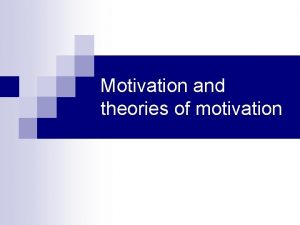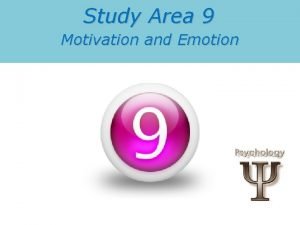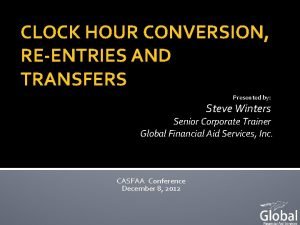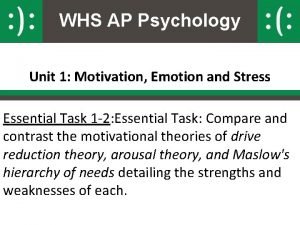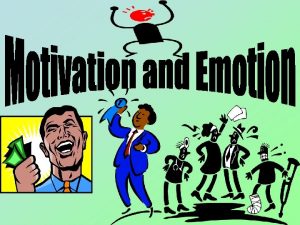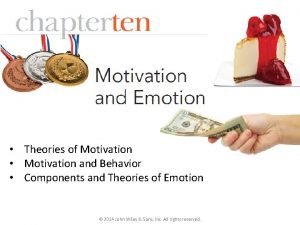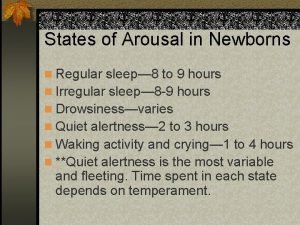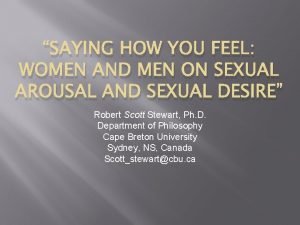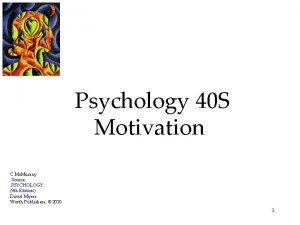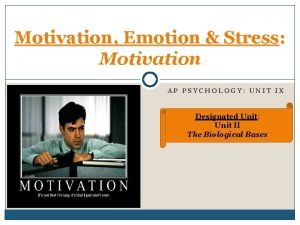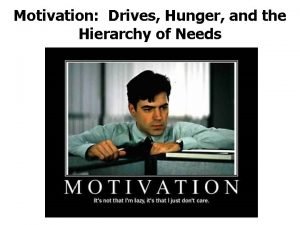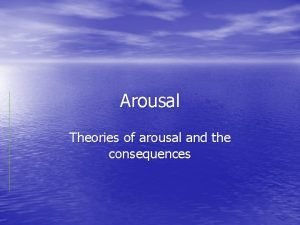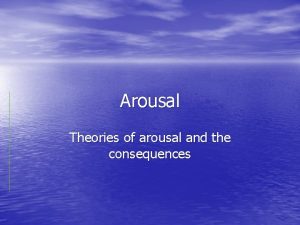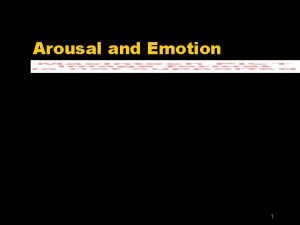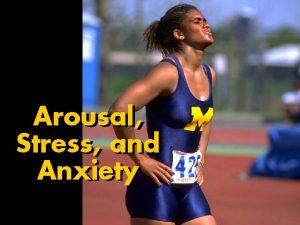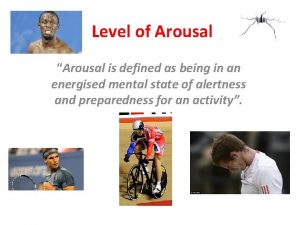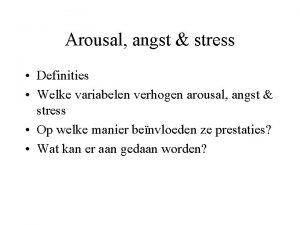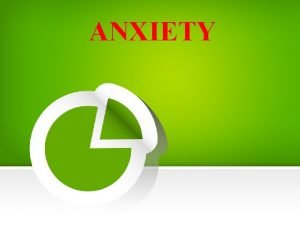Arousal First Hour How do motivation and arousal













- Slides: 13

Arousal First Hour – How do motivation and arousal interact? What is the effect of arousal on performance? Motivation and level of arousal • Drive reduction, optimal level of arousal and thrill seeking behaviour How does arousal level interact with ability? • Yerkes-Dodson Law Zajonc’s theory of social facilitation (ch 10): • The effects of arousal on performance Short and long term effects of excessive arousal • Stress and the general adaptation syndrome

Arousal: A state of alertness, wakefulness and activation caused by nervous system activity arousal

Hull’s Drives Reduction Theory • We seek to reduce drives to a level of zero

Clark Hull’s list of regulatory drives: • • Thirst Hunger Optimum temperature Urination Defecation Burping Rest (after protracted exertion) Sleep (after protracted wakefulness) Activity (after protracted inaction)

Need Drive Instrumental behavior Consummatory behavior Drive reduction Homeostatic restoration Quiescence

Optimal level of arousal theory • We seek a moderate level of arousal.

Optimal Level of Arousal Theory: • A moderate level of arousal is pleasant. • Lower or higher levels of arousal are unpleasant. • People seek pleasure and avoid displeasure. • People differ in the natural level of arousal. • Arousal is influenced by situational factors. • People will choose environments that produce optimal levels of arousal for themselves.

Zuckerman’s theory of sensation seeking behaviour • Some people seek a very high level of arousal

Four main tendencies of Sensation Seekers (Zuckerman) • Thrill and adventure seeking • Experience seeking • Disinhibition • Susceptibility to boredom

Yerkes-Dodson Law 1 Quality of performance (Interaction between degree of arousal and quality of performance) Student 2 Peak performance PSY 100 test Student 3 Student 1 Very low Very high Degree of arousal

Yerkes-Dodson Law 2 (Interaction between degree of arousal and task difficulty) Quality of performance Easy task (Factory assembly line task) Difficult task (PSY 100 test) Very low Very high Degree of arousal

Stress resistance Selye’s General Adaptation Syndrome (GAS) Stage 1 “Alarm” (mobilize resources) Stage 2 “Resistance” (cope with stressor) Stage 3 “Exhaustion” (reserves depleted)

Mean Stress Ratings: Death of spouse Divorce Marital separation Jail term Death of close family member Personal injury or illness Marriage Fired at work Marital reconciliation Pregnancy Sex difficulties 100 73 65 63 63 53 50 47 45 40 39
 Arousal theory psychology definition
Arousal theory psychology definition Facial feedback hypothesis
Facial feedback hypothesis 12 hour clock to 24
12 hour clock to 24 Clock hour to credit hour conversion
Clock hour to credit hour conversion Drive reduction
Drive reduction Masolow
Masolow Arousal theory psychology
Arousal theory psychology States of arousal
States of arousal Orgasmic dysfunction
Orgasmic dysfunction Sexual arousal in men
Sexual arousal in men Arousal theory
Arousal theory Teori pembangkitan psikologi lingkungan
Teori pembangkitan psikologi lingkungan Arousal theory ap psychology
Arousal theory ap psychology Yerkes dodson theory
Yerkes dodson theory
